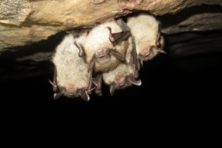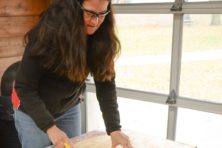Surveys Show Bat Populations Down
- Share
- Tweet
- Pin
- Share

Winter 2019 surveys are showing that the bat disease white-nose syndrome (WNS) – which does not affect people or other animal species – has reduced bat populations to zero at some hibernation sites and decreased others by 72 to 97 percent.
State bat biologists are calling on the public to report barns, buildings, bat houses and other roosts where surviving bats are showing up. Bats at roost sites could be survivors of the syndrome or young bats born this year that have not yet been exposed to the fungus that causes the disease.
Knowing about these locations will allow biologists to vaccinate healthy bats if current experimental trials under way in Wisconsin prove to be effective. Report roosts to [email protected].
WNS causes hibernating bats to wake frequently, which depletes their energy and causes them to die from starvation, dehydration or exposure to the elements. Since the discovery of WNS in New York in 2006, millions of bats have died, and the disease has spread to 33 states and seven Canadian provinces.
Relatively good news is that bat populations at Wisconsin’s two largest hibernation sites were down significantly, but large numbers of bats were persisting.
Bats can eat up to 1,000 insects an hour, and a recent national study put their value to Wisconsin’s agricultural industry between $658 million and $1.5 billion a year.
The DNR seeks volunteers to help with “acoustic” surveys. These volunteers receive training and equipment to help them detect bat calls while the volunteers walk, drive, paddle or bike along set routes.
Other volunteers are needed for the Great Wisconsin Bat Count, which will be held May 31 through June 2 and July 19-21. The first statewide count is conducted before young bats, called “pups,” are able to fly, and the second count occurs after pups are flying on their own. Volunteers identify bat roosts, sit outside the entrance in the evening to count the bats as they emerge just after sunset, and report their results to the DNR.
To learn more about volunteering, visit the DNR’s Wisconsin Bat Program website, and use the “Volunteer” drop-down menu.


